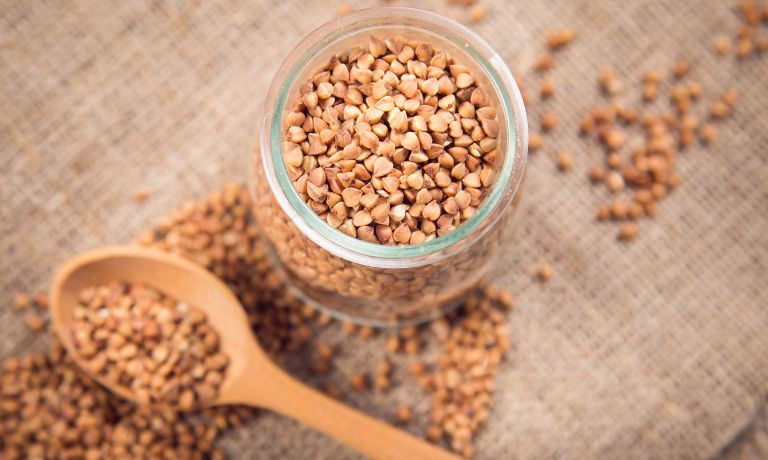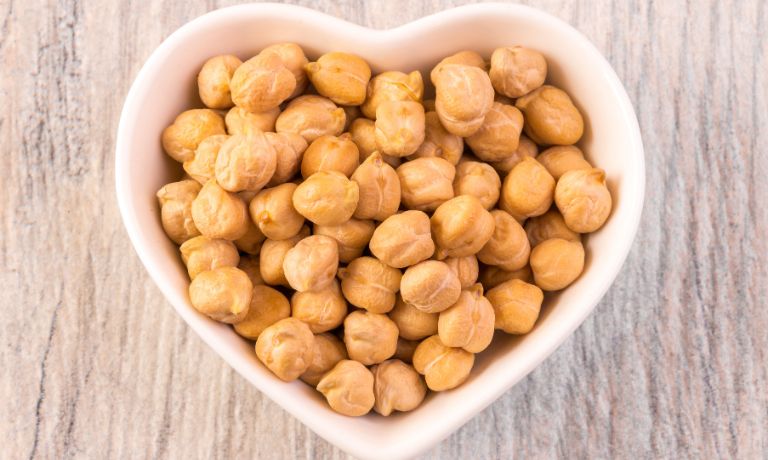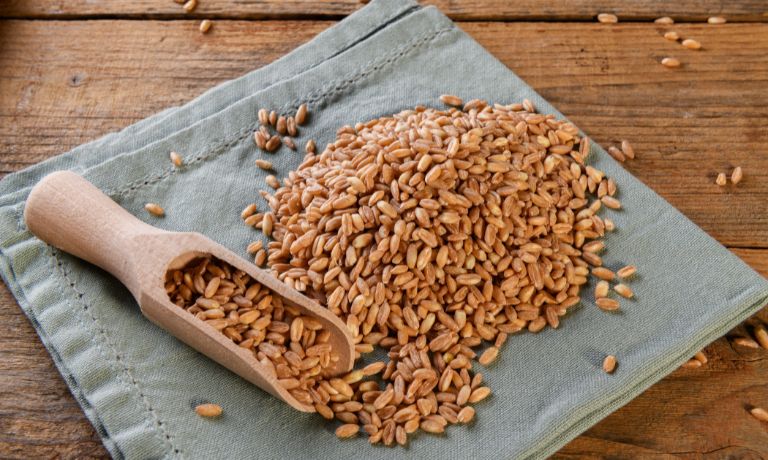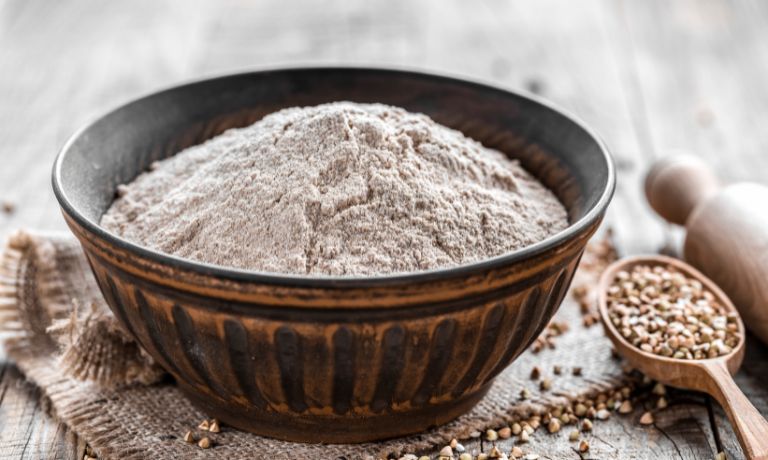If you’ve ever had buckwheat groats in your kitchen, you know how versatile and nutrient-rich they can be.
Unfortunately, finding them at the store or farmer’s market is not always easy.
Luckily, plenty of other options to substitute for buckwheat groats will provide the same great health benefits.
In this blog post, we’ll explore several unique alternatives, so you have more nutritious options on hand when cooking.
What Are Buckwheat Groats?
Buckwheat groats are a type of whole grain derived from the buckwheat plant.
Buckwheat groats have been used in cooking for centuries due to their hearty, nutty flavor and texture.
They are high in protein, fiber, and essential minerals like magnesium and zinc.
They also contain B vitamins and other important compounds that can help to improve your overall health.
Buckwheat groats can be cooked similarly to rice or quinoa – just boil in water for about fifteen minutes until the grains become tender.
You can also use them as a base for grain bowls, stir-fries, pilafs, or risottos.
Buckwheat groats can be soaked and sprouted to make a nutritious alternative to wheat-based bread.
They can even be ground into flour for baking or used as a coating for foods like fried chicken.

Substitutes For Buckwheat Groats
Buckwheat groats have a distinct flavor and texture that can be difficult to replicate, but some viable substitutes exist.
Chickpeas
Chickpeas, also known as garbanzo beans, are a type of legume used in cooking for centuries.
They are an important part of many traditional Mediterranean dishes but are now popular worldwide.
Raw chickpeas can be roasted and eaten as a crunchy snack.
They can also be ground into flour used in baking or boiled and seasoned to make hummus.
Cooked chickpeas are often added to soups, stews, salads, pilafs, curries, and stir-fries for extra flavor and texture.
Chickpeas are a great addition to vegetarian and vegan dishes as they provide a good source of plant-based protein and fiber.

Oats
Oats can be a substitute for buckwheat groats. They are cereal grains used for centuries in baked goods and various other dishes.
Oats are high in fiber, vitamins, minerals, and proteins, making them an excellent choice for a healthy diet.
They can be ground into oatmeal and used to make porridge or added to bread and other baked goods for added texture.
They can also thicken soups and stews or as oat-based stuffing for meat dishes.
Oats can also be ground into flour instead of traditional wheat flour when baking bread and other baked goods.
Additionally, oats can be cooked with milk and made into a cereal similar to granola or muesli.

Barley
Barley is a cereal grain used in cooking and brewing for thousands of years.
It is highly nutritious, providing a good source of dietary fiber, vitamins, minerals, and essential amino acids.
Barley can be eaten both as a whole grain or as flour.
When used in cooking, it is often cooked like rice and served with vegetables and sauces.
Common uses for barley in cooking include making soups, stews, casseroles, risottos and pilafs.
It can also be used to make delicious bread and baked goods. It is often used in brewing beer and whiskey as well.
Barley can also be used as a substitute for rice in many recipes, making it an ideal choice for those looking to cut down on their carbohydrate intake.
Finally, it is often ground into flour for baking and used as a nutritious alternative to traditional wheat flour.

Bulgur
Bulgur is a cereal grain from cracked or partially cooked whole wheat kernels.
It has a nutty, slightly chewy texture and can replace rice in many dishes.
Bulgur is very nutritious; it is high in fiber, contains a good amount of protein, is low in fat, and has a variety of vitamins and minerals.
Additionally, bulgur cooks quickly, making it an ideal choice for busy cooks.
Bulgur is a common ingredient in Middle Eastern cuisine, often boiled and served with vegetables, sauces, or meats.
It can also be dried and ground into flour for baking, such as bread and crackers.
Bulgur is an excellent side dish or can make delicious salads, soups, and casseroles.
It can also be used in meat dishes such as burgers or stuffings.

Farro
Farro is an ancient grain that has been popular in Italian cuisine since the Middle Ages.
It is a type of wheat, and it comes in two forms: semi-pearled farro and whole farro.
Semi-pearled farro has had some of its bran removed, making it cook faster than the whole farro.
Whole farro still contains all of its bran, which makes it a nutritious, high-fiber option.
Farro can be used in a variety of ways. It can be cooked like rice and served as a side dish or main course.
It can also be added to soups, salads, and casseroles for extra texture and flavor.
Farro is especially popular in risottos and pilafs. When cooked, farro has a chewy texture and nutty flavor.
It pairs well with herbs, vegetables, cheese, and other grains.

Quinoa
Quinoa is an ancient grain that has been used for thousands of years by indigenous cultures.
It’s recently become quite popular among health-conscious eaters.
Quinoa is a complete protein, containing all nine essential amino acids. It’s also gluten-free, high in fiber, vitamins and minerals.
Quinoa can easily be cooked as a side dish, or be used as a base for salads, stir-fries, soups and stews.
It can also be added to baked goods such as muffins or pancakes. Quinoa comes in a variety of colors including white, red and black.
Each type has a different texture and flavor which make it a great addition to any recipe.

Buckwheat Flour
Buckwheat flour is made from the seeds of buckwheat plants. This gluten-free flour is high in protein and has a nutty flavor.
Buckwheat flour provides important dietary fiber, vitamins, minerals, and protein that are essential for healthy living.
When cooking with buckwheat flour, you may need to use more liquid than with other flour.
It can be used as an alternative to all-purpose or wheat flour and is ideal for baking goods like pancakes, breads, muffins, cakes, cookies, and other items.
It can also be used for coating vegetables and meats before frying, as well as thickening sauces and soups.
Additionally, it is a great addition to smoothies and baked goods for added flavor and nutrition.

FAQs
Can Oats Replace Buckwheat Groats?
Yes, oats can replace buckwheat groats in many recipes.
Oats are a great substitute for buckwheat because they have a similar nutty flavor that is ideal for baking or using in savory dishes.
Can Buckwheat Flour Replace Buckwheat Groats?
Yes, buckwheat flour can be used in place of buckwheat groats.
Depending on the recipe, you may need to adjust other ingredients or cooking times, but the two are interchangeable.
Are Grains Similar To Buckwheat Groats?
Grains and buckwheat groats have some similarities, but they are not the same.
Grains are seeds from specific grasses that can be used for food, while buckwheat groats are actually hulled kernels of different plant species.
Conclusion
Buckwheat groats are a versatile and nutritious ingredient that can be used in many dishes.
However, if you can’t find them or need substitution options, there are several other grains and legumes available with similar nutritional benefits.
Garbanzo beans, oats, barley, bulgur, farro and quinoa are all ideal options.
Each of these options provides protein, fiber, vitamins and minerals as well as a range of textures and flavors to suit many different dishes.
With the right substitution ingredients, you can still enjoy all the health benefits that buckwheat groats have to offer without sacrificing taste or nutrition.

